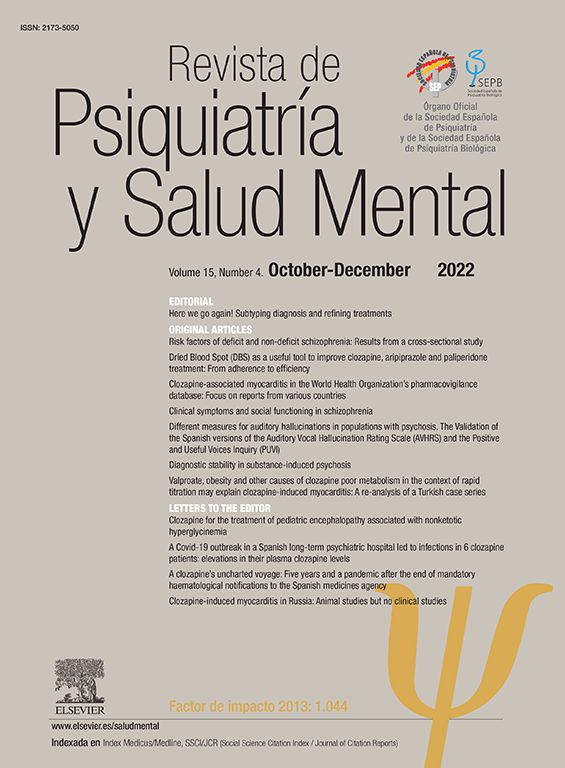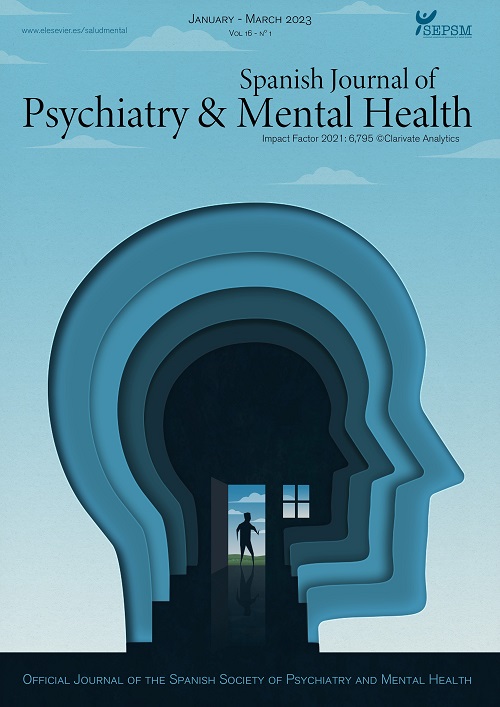Original Articles are research papers that contribute new results con-cerning the Journal¿s areas of interest. Manuscripts should be divided into the following sections: Introduction, Materials and Methods, Results, Discussion and References. The recommended length of the text is 3,000 to 3,500 words (excluding the abstract, tables, figures and references). The text should include a maximum of 6 tables and/or figures (charts, graphs or illustrations). Authors are also advised to limit the number of references, if possible, to a maximum of 40 references. Original articles must be accompanied by an abstract of maximum 250 words that includes the following sections: Introduction, Material and Methods, Results and Conclusions.
Short Original Articles are research papers that because of their special features (articles with a small number of cases, descriptive epidemiological studies and papers with very specific objectives and results) can be published in abbreviated form. The text is limited to 1,500 words, a maximum of 2 figures and/or tables and up to 15 references. Each article should be structured like an original article, and should begin with a structured abstract of no more than 250 words.
Reviews. We require authors to follow the recommendations from PRISMA and register the protocol for systematic reviews before data extraction on an accessible, searchable site such as PROSPERO. Please include the registration number in the abstract. If the review has not been registered, we are unable to consider your submission. Systematic reviews are preferred, narrative reviews will be published only under exceptional circumstances.
Review articles are usually solicited by the Editors, but we will consider unsolicited material. We rarely proceed with Review papers for which the first author is a student and has not contributed to substantive work in the field on his or her own accord. Please contact the editorial office before writing a review article for the Journal.
The unstructured summary of the manuscripts in this section should be as concise as possible (about 150 words), with a maximum of 5 figures / tables (in total). Maximum length: up to 4000 words of text, up to 75 references and no more than 5 tables and/or figures. A PRISMA-style flow diagram and a table with ratings of the quality of the studies/evidence should be included as an online supplement. Reviews that do not comply these requirements will be not considered for publication and returned unreviewed.
Viewpoints. These papers may address virtually any timely and important topic in psychiatry, clinical psychology or mental health in general. Viewpoints should be well focused, scholarly, and clearly presented but should not include the findings of new research or data that have not been previously published. Viewpoints are commissioned by the Editor concerning well-known subjects in psychiatry that are going through a period of controversy or re-evaluation ¿ intended to give a long-term, balanced perspective on the subject, based on the latest evidence.
Viewpoints must have no more than 3 authors. Maximum length: up to 1200 words of text¿or 1000 words of text with 1 small table or figure¿and no more than 10 references. Viewpoints that do not meet these requirements will be not considered for publication and returned unreviewed.
Clinical trials and Protocols. Authors wishing to submit an article to this section are invited to contact the Editor-in-Chief prior to submission in order to screen the relevance and priority. Large publicly-funded clinical research projects that prospectively assigns human participants to intervention or comparison groups to investigate the cause-and-effect relationship between a health-related intervention and a health outcome are welcomed by the Journal.
Health-related interventions include any intervention (e.g., drugs, procedures, devices, behavioral treatments, dietary interventions, and process-of-care changes) used to modify a mental-health related outcome.
All clinical trial must be registered at an appropriate online public registry. For clinical trials, CONSORT statement comprising flow diagram and checklist is warranted. Observational studies (those in which the assignment of the medical intervention is not at the discretion of the investigator) will not require registration. All articles are rigorously peer reviewed before a final publication decision is made.
The recommended length of the text is 3,000 words (excluding the abstract, tables, figures, and references). The text should include a maximum of 5 tables and/or figures (charts, graphs, or illustrations). Authors are also advised to limit the number of references, if possible, to a maximum of 25 references. The articles must be accompanied by an abstract of maximum 250 words that includes the following sections: Introduction, Material and Methods, Results and Conclusions. A 3 key points of the relevance of the protocol is also recommended.
Letters constitute ¿Scientific Letters¿, which include new studies that can be demonstrated briefly, and ¿Letters to the Editor¿, where readers can express their conforming or non-conforming reasoned opinion on a recent publication and on an issue they consider extremely relevant. Letters are intended to encourage and foster dialogue and discussion among the Journal¿s professional readers. Contributions should be accurate and properly argued, preferably with a maximum of 10 references. The text should be limited to 750 words, and preference will be given to the most concise, brief and comprehensive letters. The Journal reserves the right to shorten the letter¿s text, whether for exceeding the established length or for repetitions affecting its fluent reading.
Editorials are usually commissioned. However, the editorial board may consider unsolicited editorials for publication and submission to the review process, for which prior agreement is advisable.





